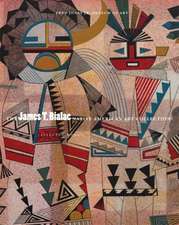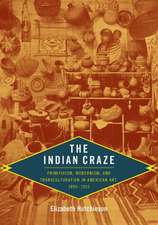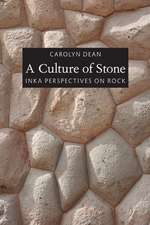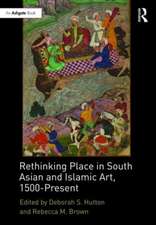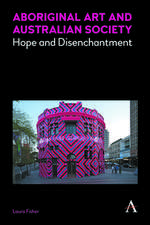Art for a Modern India, 1947–1980: Objects/Histories
Autor Rebecca M. Brownen Limba Engleză Paperback – 16 mar 2009
Preț: 278.63 lei
Nou
Puncte Express: 418
Preț estimativ în valută:
53.33€ • 57.95$ • 44.83£
53.33€ • 57.95$ • 44.83£
Carte tipărită la comandă
Livrare economică 21 aprilie-05 mai
Preluare comenzi: 021 569.72.76
Specificații
ISBN-13: 9780822343752
ISBN-10: 0822343754
Pagini: 224
Ilustrații: 27 illustrations (incl. 10 in color)
Dimensiuni: 172 x 215 x 18 mm
Greutate: 0.45 kg
Editura: MD – Duke University Press
Seria Objects/Histories
ISBN-10: 0822343754
Pagini: 224
Ilustrații: 27 illustrations (incl. 10 in color)
Dimensiuni: 172 x 215 x 18 mm
Greutate: 0.45 kg
Editura: MD – Duke University Press
Seria Objects/Histories
Cuprins
List of Illustrations ix
Acknowledgments xi
Introduction: The Modern Indian Paradox 1
One. Authenticity 23
Two. The Icon 45
Three. Narrative and Time 75
Four. Science, Technology, and Industry 103
Five. The Urban 131
Epilogue. The 1980s and After 157
Notes 163
References 171
Index 187
Acknowledgments xi
Introduction: The Modern Indian Paradox 1
One. Authenticity 23
Two. The Icon 45
Three. Narrative and Time 75
Four. Science, Technology, and Industry 103
Five. The Urban 131
Epilogue. The 1980s and After 157
Notes 163
References 171
Index 187
Recenzii
Rebecca M. Brown weaves a rich and layered narrative of Indian post-independence art, interweaving painting with a wide range of references that include the architecture of Charles Correa, the high cinema of Satyajit Ray, and the demotic art of Bollywood. All the while she balances theoretical sophistication with penetrating insights into the singular achievements of these artists as they negotiate the predicament of local versus global modernism. In the process, she unravels the indebtedness of modernity itself to colonialism. There has long been a crying need for such a work and Browns pioneering opus fulfils this admirably.Partha Mitter, author of The Triumph of Modernism: Indias Artists and the Avant-Garde, 192247
Notă biografică
Textul de pe ultima copertă
"Rebecca M. Brown weaves a rich and layered narrative of Indian postindependence art, connecting painting with a wide range of references that include the architecture of Charles Correa, the 'high' cinema of Satyajit Ray, and the demotic art of Bollywood. All the while she balances theoretical sophistication with penetrating insights into the singular achievements of these artists as they negotiate the predicament of local versus global modernism. In the process, she unravels the indebtedness of modernity to colonialism. There has long been a crying need for such a work, and Brown's pioneering opus fulfills this admirably."--Partha Mitter, author of "The Triumph of Modernism: India's Artists and the Avant-Garde, 1922-1947"
Descriere
A look at how prominent Indian visual artists created modern art for the postcolonial nation in the years between Indias independence in 1947 and 1980



















